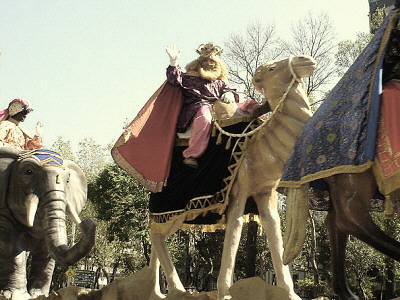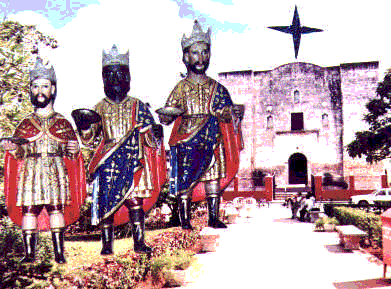 January 6th is the date when the Three Wise Men (Kings) set about on their peculiar forms of transport (horse, camel, and elephant) and deliver gifts to children around the world, and Mexico is no exception.
January 6th is the date when the Three Wise Men (Kings) set about on their peculiar forms of transport (horse, camel, and elephant) and deliver gifts to children around the world, and Mexico is no exception.
Kings’ Day is one of the most anticipated days for Mexican children as in various parts of the country the figure of Santa Claus is not as prevalent within the culture, so the Kings fulfill the role of delivering surprises and toys. Of course there are those who also receive double the gifts (those from Santa and from the Kings).
Yet, where does this tradition come from and what does it mean?
Within Christianity, this date is in reality called “Epiphany”, which follows Jesus’ birth and represents the arrival of the Three Wise Men from the East, symbolizing Gentiles from across the globe who recognize the child as the Son of God. The tradition of celebrating this event on Jan. 6th comes from countries with a Catholic tradition, as its essence is linked to these beliefs. According to tradition, the Wise Men were the first “pagan” Kings to seek out the Messiah. The Kings, Melchor, Gaspar and Balthazar, guided by the Star of Bethlehem, had come from the East in order to honor the newborn, bringing with them gifts fit for a King: gold, myrrh, and incense.
This is where the story begins in telling about how these Kings travel the globe in order to bring gifts to children. Similar to Santa’s list, as the story goes, children who have been good receive a gift while those who have been bad are given a piece of coal. This legend was passed down from generation to generation and eventually brought to Mexico by evangelists who strengthened children’s dreams of receiving a present from the Kings during their visit on the night of Jan. 5.
An interesting note is that during a time when skin color was more marked, it was supposedly the custom to say that Melchor was the King that brought gifts to children with lighter skin, Gaspar to those of olive complexion, and Balthazar brought presents to those with dark skin. In this way, everyone received a present while the Kings promoted unity and equality. All well behaved children received gifts.
 Within this holiday environment of family and friends it is traditional to come together to share the “Rosca de Reyes” (a sweet yeast bread only made at this time of year and also a tradition brought from Spain). In Mexico, it is the custom to hide small plastic figurines within the Rosca cake so that whoever finds one in their piece becomes responsible to invite everyone for a tamale feast on Feb. 2, the Día de la Candelaria (which is when people dress figures of “Los Niños Dios” to be presented at church by godparents).
Within this holiday environment of family and friends it is traditional to come together to share the “Rosca de Reyes” (a sweet yeast bread only made at this time of year and also a tradition brought from Spain). In Mexico, it is the custom to hide small plastic figurines within the Rosca cake so that whoever finds one in their piece becomes responsible to invite everyone for a tamale feast on Feb. 2, the Día de la Candelaria (which is when people dress figures of “Los Niños Dios” to be presented at church by godparents).
 In order to consider the importance of this date across the country, did you know the second most important sanctuary for the Three Wise Men is located in Mexico? It is in Tizimín, Yucatán, which is a spot visited by thousands of people during the religious festivals in the Kings’ honor from the end of December through the beginning of January each year.
In order to consider the importance of this date across the country, did you know the second most important sanctuary for the Three Wise Men is located in Mexico? It is in Tizimín, Yucatán, which is a spot visited by thousands of people during the religious festivals in the Kings’ honor from the end of December through the beginning of January each year.
MoKa Hammeken
